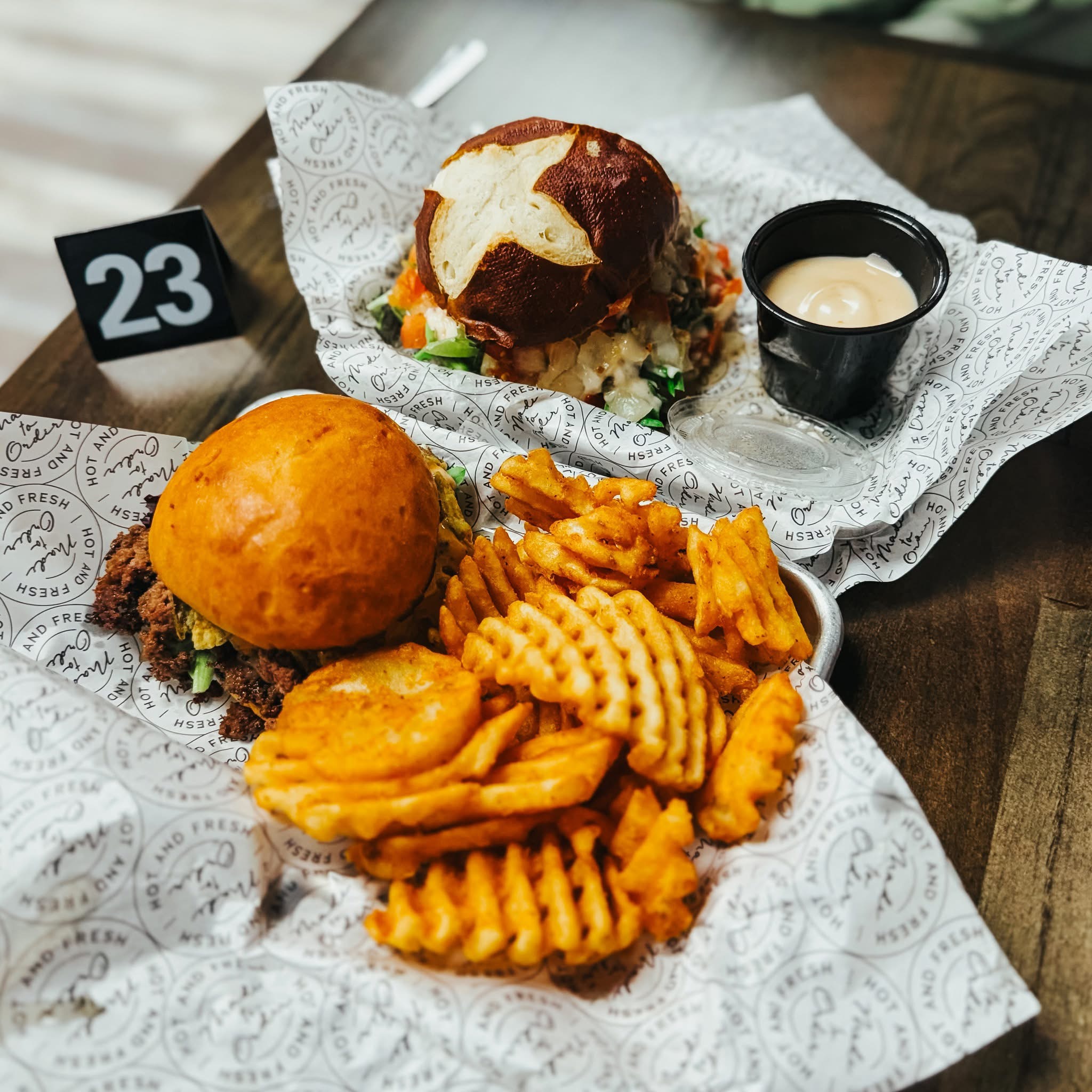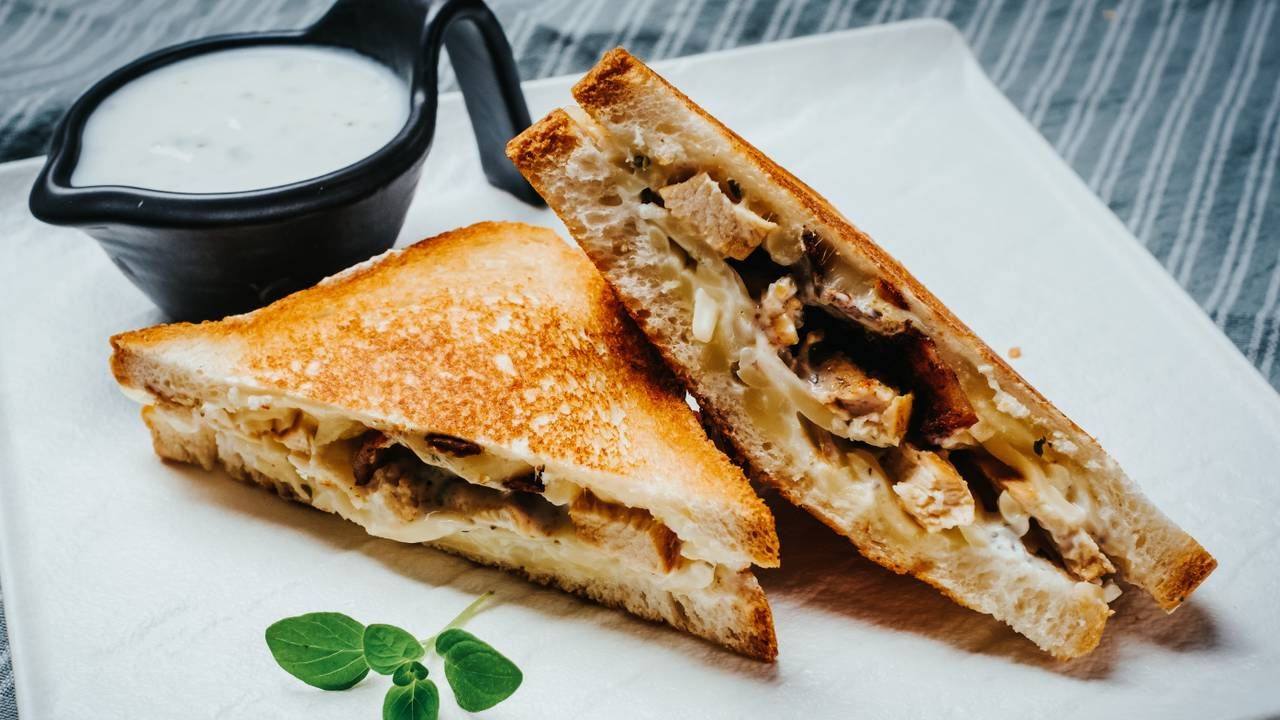Categories
practical health journalThe Practical Health Journal - September 23rd, 2025
Read this on Healthyandwholeyou.com
Read Time: 8.4 Minutes
The Devils In The Details:
Often Missed Details That Cause Weight Loss Plateaus
Hey Friend,
Getting stuck in a “plateau” during a weight loss journey can be one of the most frustrating things—especially when you aren’t sure why you’re stuck.
It’s ironic how weight loss can be so simple and yet so complex at the same time. It really is a simple calories in vs. calories out equation that works every time when you get it right… but the complexity of real life makes it surprisingly difficult to keep that equation right for many people.
As a result, they end up stuck due to one or more small details that add up just enough to keep them out of a calorie deficit consistently enough to see results.
At Healthy & Whole, we call these “The Devils in the Details.” They’re the often-missed details that cause plateaus—until they’re corrected.
In today’s Tuesday Deep Dive, I’m sharing the most common little devils we see (and fix) all the time so our clients can keep moving forward.
Let’s dive in…
You Went From Carefully Measuring to Eyeballing Portions
We’ve all been there. In the beginning, you measure everything with cups, spoons, and a food scale. You’re meticulous—and it works.
Then you get comfortable. You start eyeballing.
Next thing you know, the scale stalls.
Why? Because some foods are calorie landmines if you “guesstimate.”
Peanut butter is the perfect example: two leveled tablespoons = ~190–210 calories. But “Mt. Peanut Butter” on a tablespoon can easily be double (or more). That’s an extra 200–400 calories from one innocent scoop—nearly a full meal’s worth.
Multiply two or three “little” mis-measurements across a day and, boom: plateau. Or even weight GAIN.
Fix: If you’re stuck and haven’t been measuring precisely, start here. It’s often the first place things go wrong.
You’re Categorizing Foods Incorrectly (and Overeating Them)
If I had a penny for every time someone said they were eating more peanut butter for the protein, I’d be a rich man.
Peanut butter is not a protein. It’s predominantly fat (and fat has 9 calories/gram vs. 4 for protein/carbs). When you treat PB like a protein, you end up eating a lot of extra fat calories while thinking you’re “fueling protein.”
Same goes for “protein” that’s actually fatty cuts of meat or poultry:
-
Beef less than 96% lean (e.g., 90/10, 80/20)
-
Chicken thighs vs. chicken breast
-
Salmon, pork sausage, brisket, etc.

None of these are "bad" foods by any means, but if you are eating more of them thinking you are slamming down protein, you might be unknowingly sabotaging your calorie deficit.
We tend to mentally file these fattier cuts of meat, chicken, fish, pork, etc. under protein, but many deliver more fat calories than protein—an easy way to drift out of a deficit (especially for women with slower metabolisms).
Fix: Learn the macros of what you eat (protein vs. fat vs. carbs), not just the category. This is doubly important for diabetics who need to manage carbohydrate intake.
Your Meals/Recipes Got More Complex (and So Did the Errors)
Early on, simple works: simple meals, simple snacks, simple success.
Over time, meals naturally get more complex (more ingredients, more sauces, more “fun”). That’s fine if you know how to build more complex recipe or meal so it still fits your calorie and protein targets.
If you don’t, complexity can quietly add hundreds of calories and stall your results.
Fix: If you’re plateaued, dial back to simple for a bit to regain momentum. Then (ideally) learn how to reintroduce complexity without blowing the numbers. We teach this skill in Healthy & Whole for exactly this reason.
You’re Not Planning & Preparing Ahead Anymore
Most people start strong: plan meals, shop the list, prep ahead, win the week.
Then life gets busy. You get hungry. Nothing’s ready.
Best case, you know how to order well at a restaurant or throw together a quick on-plan meal. Worst case, it becomes an excuse to indulge—“I’ll get back on track tomorrow”… which turns into Monday… which turns into next month.
Fix: If you don’t yet have the skill to “make it work” in any setting, then planning and prep are your best friends. (For the record, I don’t meal prep much now either—but only because I’ve built the skills to adapt on the fly.) Until then: plan it, prep it, protect it.
“A failure to plan is a plan to fail.”
You Are Planning—But Ditching the Plan
This one’s common: you buy the groceries, do the prep… and then eat something else.
Why? Usually because you don’t actually like what you prepped enough to choose it when other more appealing options are around.
Prime example below...
Both of these meals are very low calorie and very high protein, but one tastes like it shouldn't be healthy, and the other tastes really bland and boring.
I know which one I would go for!
By the way if you want the recipe for that french toast I share it here in this Instagram reel.

Fix: Make on-plan food you love. If your healthy menu is bland or boring, you’ll abandon it sooner or later. Build a menu that tastes amazing and fits your calorie and protein goals for results, and watch your consistency soar.
You Started Structured… Then Slid into Grazing
Structure is how we help clients get results without tracking every calorie:
-
3 properly portioned meals
-
1–2 protein-based snacks
-
A predictable timing that fits your life

When you lose or drift away from the structure, it’s death by a thousand bites—grazing, finishing the kids’ plates, casual seconds, etc.
Your “calories in” side gets blurry fast.
Fix: Re-establish a clear daily structure for your meals and snacks. It’s usually the first lever we pull when results slow.
You Have Structure—But You’re Indulging Too Often
We live by the 80% rule: when ~80% of your meals/snacks are “on plan,” the other 20% (reasonable indulgences) usually won’t derail progress.
Where people get stuck: either the 20% becomes more frequent, or the indulgences become massive (single meals that wipe out a week’s deficit).
Why this happens (most often):
-
Stress → turning to food for comfort more and more.
-
Boring menu → looking for satisfaction you’re not getting from your “healthy” meals.
Fix: Address the root. If it is stress, work on solving the problem you are dealing with at the root or work on your mindset and how you are processing it. Or, simply turn to other ways to help you feel better and to manage your stress that aren't caloric.
If boredom is the problem, upgrade your on-plan menu so it’s actually satisfying, and you'll find yourself needing cheat meals less and less.
You’re Eating Out More Than You Were
Restaurant food = more oil and fat (and carbohydrate)—and often hundreds of invisible calories you wouldn’t add at home.
Go from eating out 1–2×/week to 3–5×/week and you could add 1,000–2,500+ weekly calories without realizing it.
If you were losing ~1 lb/week (~3,500-calorie deficit), that extra intake can cut your loss to a crawl—or stall it outright.

Sometimes life seasons change and that dictates that we end up needing to eat out more than we were before.
That is OK, if we know what we are doing.
Fix: If your season changed (travel, kids’ sports, more social meals), learn to order smart, aka how to order ideal meals in restaurants that won't sabotage your results. We coach and teach on this heavily so our clients can thrive even when restaurants are frequent.
Your Activity Is Down… But Your Food Has Stayed the Same
Sick, injured, slammed at work, long travel days—these are all totally valid reasons that your daily calorie burn might go down.
But if calories out drop and calories in don’t, you will drift out of a calorie deficit and into calorie maintenance (or even a calorie surplus).
Fix: Ideally, we keep steps at a minimum of 8,000/day (80% of the time) and lift 3×/week. If you can’t hit these ideal activity standards for a short season, it is OK to temporarily reduce food intake (e.g., skip a snack or trim a meal) to stay in a calorie deficit and to keep progress moving.
I don't recommend doing this for the long term, as it isn't sustainable, but short term is OK.
And also remember, there are no deadlines for most people.
There is nothing wrong with simply maintaining weight for a week or two while you are injured or sick. Maintaining weight for a short time before going back into a calorie deficit is NOT failure, it can be a strategy that buys you the time to recover before pushing onward.
Your Activity Is Up… So You’re “Earning” More Cheats
We see this, too. You crush a run or workout, then “treat yourself.” In theory, more calories out + more calories in could still net you in a calorie deficit if all things remain equal. But, in practice, it’s REALLY easy to overshoot.
One slice of pizza? ~300 calories in 60 seconds. Burning those 300 calories back off? About an hour of exercise. And let’s be honest… who stops at just one slice of pizza? 🍕😉
Fix: Celebrate the workout—WITHOUT rewarding with food. Keep indulgences intentional and sized within your plan.
You’re Drinking Alcohol (and It’s Driving Food Choices)
We all know that when we drink alcohol it impacts our decision making and our personality.
For me, when I drink alcohol, it lowers my inhibitions and I am VERY prone to saying screw it when it comes to foo choices.
So I won’t hammer on this one much because I think it is pretty self explanatory, but just know that if you are someone who drinks alcohol, you might want to examine the frequency and volume of your alcohol intake for two reasons.
- Alcohol is high in calories at 7 calories per gram without any mix ins. So alcohol ALONE can plateau you if you aren’t accounting for it in your daily intake.
- Alcohol can influence you to consume additional food and make poor food choices.
Fix: If you drink, check both frequency and volume. Account for the calories, and be honest about how it affects your decisions.
Bonus points if you transition from alcoholic drinks to non-alcoholic, low calorie mocktails like the one I shared in this newsletter edition here. 💪🏻
Conclusion
If you’re stuck, I hope at least one of these flicked on a lightbulb. These are the exact “devils in the details” we troubleshoot daily with clients at Healthy & Whole.
If the volume of “stuff to learn” feels overwhelming, that’s normal. You don’t have to figure it out alone—we’re here when you’re ready.
In the meantime, hunt down the little devils and keep them in line so you can get the results you want.
Until next time,
— Coach Matt
When you're ready, here's how I can help:
If you're looking to lose weight sustainably while building a flexible lifestyle that you enjoy, I can help. Apply for coaching here in the Healthy & Whole Mentorship Program.
Disclaimer: This email is provided for educational and informational purposes only and does not constitute providing medical advice or professional services. The information provided should not be used for diagnosing or treating a health problem or disease, and those seeking personal medical advice should consult with a licensed physician.





